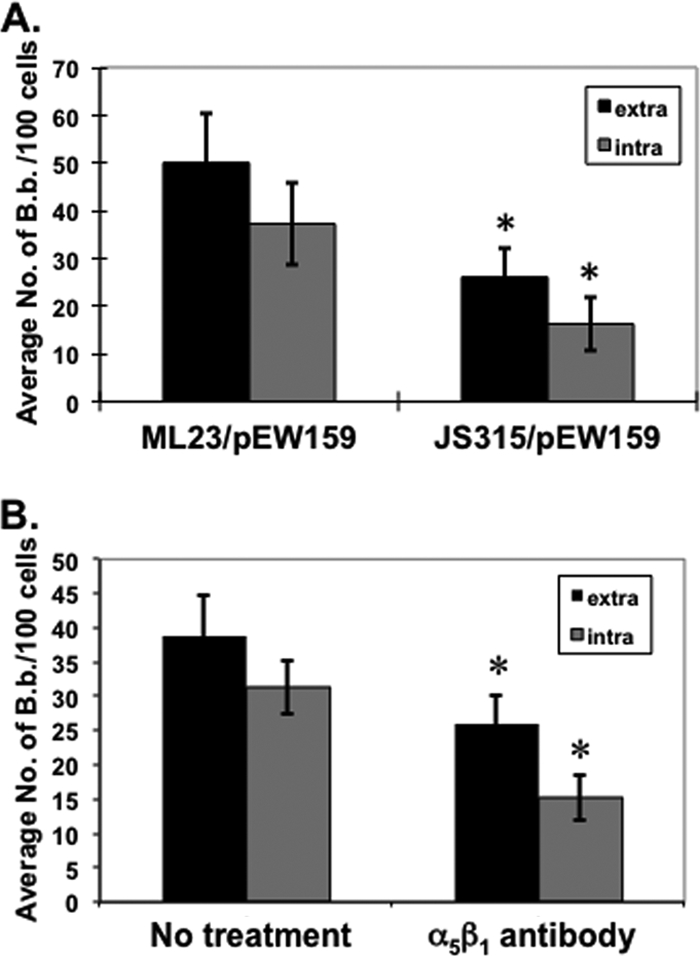FIG. 5.

The borrelial Fn binding protein BBK32 does not directly contribute to invasion of B. burgdorferi. (A) Fibroblasts were infected with infectious gfp-expressing B. burgdorferi (ML23/pEW159) or a bbk32::Strr mutant (JS315/pEW159) at an MOI of 5 for 18 h. Borrelial cells were enumerated as described in the legends to Fig. 2 to 4. The data shown for extracellular and intracellular B. burgdorferi are the averages from 3 independent assays from >3,800 host cells analyzed per group per assay. Error bars depict standard deviation. Asterisks indicate a statistically significant difference of both attachment and internalization between ML23/pEW159 and JS315/pEW159 (P < 0.01). (B) Same experiment as described in the legend to panel A except that gfp-expressing B. burgdorferi (ML23/pEW159) cells were incubated with antibody to the α5β1 integrin (10 μg/ml) for 1 h prior to infection. Data shown are the averages from 3 independent assays from >4,000 host cells analyzed per group per assay (total of >12,000 analyzed). Error bars depict standard deviation. Asterisks indicate a statistically significant difference of attachment and internalization of untreated B. burgdorferi relative to cells incubated with α5β1 antibody (P < 0.01).
